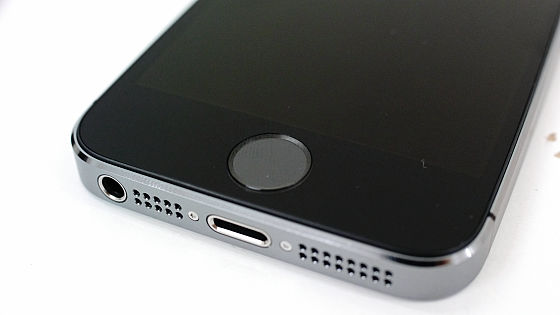Apple is developing 'Face ID' without a camera on the display and 'Touch ID' that allows fingerprint authentication just by touching the display

Apple adopted the fingerprint authentication function ' Touch ID ' for the first time in the iPhone 5s that appeared in 2013, and then adopted ' Face ID ' as a face authentication function to replace Touch ID in the iPhone X that appeared in 2017. Did. It is reported that Apple is working on developing something that is completely hidden at the bottom of the display for Touch ID and Face ID, which are used in the latest iPhones and iPads even at the time of writing the article.
ID ID: ID: ID
https://blog.naver.com/PostView.naver?blogId=yeux1122&logNo=223038747724
iPhones with under-screen Touch ID and Face ID still planned
https://9to5mac.com/2023/03/09/iphone-under-screen-face-id-touch-id/
Speaking of Touch ID, a fingerprint authentication function, by placing your finger on the home button at the bottom of the display, you can unlock the terminal or perform password authentication such as the App Store. .

You can check how to use Touch ID on iPhone 5s with the following video.
On the other hand, the iPhone X, which adopted Face ID for the first time, has abolished the home button at the bottom of the display. Instead, a notch (notch) has been added to the top of the display so that you can use Face ID to identify the user's face using the TrueDepth camera installed here.

In addition, the 4th generation iPad Air, which does not have Face ID, has Touch ID integrated into the top button, and fingerprint authentication is possible by placing your finger on the button.
Rumors have been circulating for several years about the possibility that Apple is developing a next-generation Touch ID that enables fingerprint authentication simply by touching the display.
In addition, Samsung has already adopted a fingerprint authentication system that enables fingerprint authentication simply by touching the display.

Naver user yeux1122 reported that Apple is developing a next-generation Touch ID that enables fingerprint authentication simply by touching such a display. According to Apple-related media 9to5Mac, yeux1122 is a leaker who has accurately reported Apple-related leak information.
According to yeux1122, a source at a development component manufacturer, Apple has recently 'made some progress' in developing in-display Touch ID. Sources say the in-display Touch ID is likely to be released in the next two to three years from the fledgling new Dynamic Island , and the technology will likely combine things like short-wave infrared and optical systems. , It seems that Apple has already acquired 12 related patents.
In addition, unlike the existing fingerprint authentication sensor, the touch ID with built-in display will be able to detect the user's vein pattern, measure blood oxygen saturation, and measure pulse. . In addition, it seems to detect whether the user is wearing gloves or whether the user's fingers are wet, etc., and perform fingerprint authentication according to the situation.
In addition, the parts manufacturer with whom the information source works has single-element sensors (photodiodes, phototransistors, photosensitive elements, etc.) and multi-element sensors (complementary metal oxide semiconductor arrays, photodiode arrays) to improve recognition speed. etc.).
In addition, from the patent application submitted by Apple to the US Patent and Trademark Office in February 2017, it was clear that Apple was developing a sensor that enables fingerprint authentication simply by touching the display.
Possibility of fingerprint authentication on the display of the next iPhone - GIGAZINE

By iphonedigital
Furthermore, in December 2017, Apple's supplier Synaptics succeeded in developing a fingerprint authentication sensor that works well even if it is embedded under the display.
Apple's supplier Synaptics successfully developed a fingerprint authentication sensor that can operate on the display - GIGAZINE

In addition to this, trusted mobile industry analyst Ross Young points out that Apple is working on a next-generation Face ID that completely hides the camera below the display. However, Mr. Young expects that it will appear after 2025 due to delays in sensor development.
Under panel Face ID is now expected to be pushed at least a year to 2025 or later due to sensor issues.
— Ross Young (@DSCC Ross) March 9, 2023
It is possible to hide the camera at the bottom of the display, and OPPO has already succeeded in a demonstration experiment of 'installing the camera so as to hide it at the bottom of the display'. However, OPPO admits that embedding the camera at the bottom of the display will reduce the image quality of the camera.
The algorithms behind our USC technology showcased at #MWC19 include haze removal, HDR and white balance resulting in a bezel-less phone, yet with a selfie camera that rivals current smartphones in the market today. #MoreThanTheSeen pic.twitter.com/yTpWgIMLmA
— OPPO (@oppo) June 26, 2019
Related Posts:





